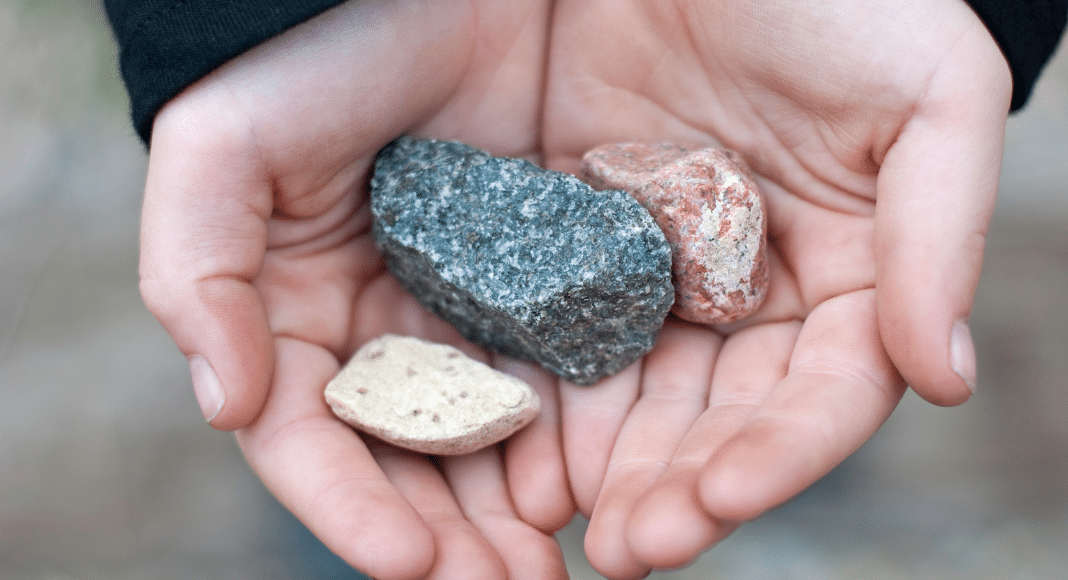
It was a warm day in February-a rarity in the Midwest. The kind of day when people put on their t-shirts and head outside after a long winter. I was in the backyard playing with my 4-year-old daughter Violet. So far, we had played with bubbles and chalk. Violet played with those for a while but, after that, seemed bored. “What to play with next….” I thought to myself.
Just then, my daughter started picking up berries that had fallen off our crabapple tree. She picked one up, studied it, and set it down. She then moved on to the next one.
I decided to sit back and just let her play. This continued for a bit longer. Violet then moved on to picking up sticks in the backyard. It struck me in a way it hadn’t before-she didn’t need entertaining. She was happy playing with rocks and sticks outside. Our ordinary, suburban backyard held treasures in her eyes.
My daughter collected so many rocks and sticks outside she needed somewhere to put them. I grabbed a tin box I had lying around the house and gave it to my daughter, “Here’s a special box for your treasures.” I told her. As she gave me each item she collected, I asked her what was special about each one, hoping to spark some curiosity in her. “This is a flower bud. It’s fuzzy now because it’s winter. In the spring, the tree will grow flowers,” I explain. We put each item in the little tin box.
Watching my daughter play outside without any help from me brought up warm memories from my childhood playing in the backyard with my brothers and sisters. After we finished school, we’d play outside for hours. We’d play pioneers, climb trees and fight with sticks. We got dirty. Memories were made. That’s the childhood I always wanted for my children.
The idea that people are drawn to nature is not new. I recently learned of the term ‘biophilia.’ The Merriam-Webster definition of biophilia is “a hypothetical human tendency to interact or be closely associated with other forms of life in nature: a desire or tendency to commune with nature.” Children tend to enjoy creeks and woods. Discovering nature and finding ways to play with water, acorns, flowers, and all that nature has to offer.
According to the National Wildlife Federation, children spend half as much time outdoors as they did 20 years ago. It’s not hard to see how this shift has taken place. Kids have access to technology in ways they did not before, with smartphones, smartwatches, and tablets. Technology has been used more and more in my own family. While technology is not inherently bad, it can have adverse effects if not kept in check.
So thank you, little tin box, for helping me reconnect with my childhood; thank you for showing me that children can enjoy nature all on their own. What are ways your children enjoy the outdoors?








